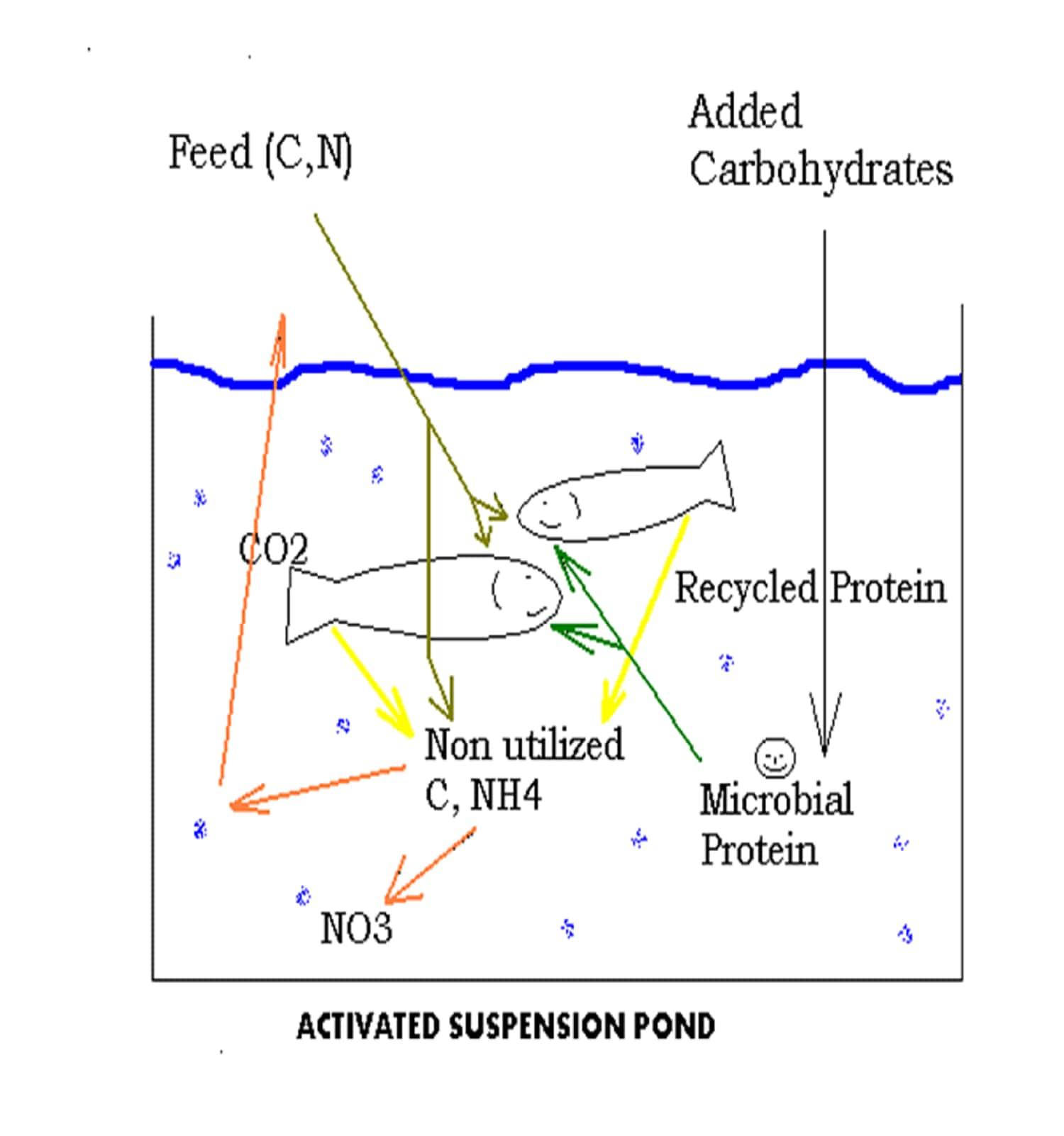Biofloc culture
Biofloc culture
It is an innovative and cost-effective technology in which toxic materials to the fish and shellfish such as Nitrate, Nitrite, Ammonia can be converted to useful product, ie., proteinaceous feed. It is the technology used in aquaculture system with limited or zero water exchange under high stocking density, strong aeration and biota formed by biofloc.The culture of biofloc will be productive in the case of culture tanks exposed to sun.
Biofloc system - the need
Biofloc system was developed to improve the environmental control over the aquatic animal production. In aquaculture, the strong influential factors are the feed cost (accounting to 60% of the total production cost) and most limiting factor is the water/land availability. High stocking density and rearing of aquatic animals requires wastewater treatment. Biofloc system is a wastewater treatment which has gained vital importance as an approach in aquaculture.
The principle of this technique is the generation of nitrogen cycle by maintaining higher C: N ratio through stimulating heterotrophic microbial growth, which assimilates the nitrogenous waste that can be exploited by the cultured spices as a feed. The biofloc technology is not only effective in treating the waste but also grants nutrition to the aquatic animal.

The higher C : N is maintained through the addition of carbohydrate source (molasses) and the water quality is improved through the production of high quality single cell microbial protein. In such condition, dense microorganisms develop and function both as bioreactor controlling water quality and protein food source. Immobilization of toxic nitrogen species occurs more rapidly in bioflocs because the growth rate and microbial production per unit substrate of heterotrophs are ten-times greater than that of the autotrophic nitrifying bacteria. This technology is based on the principle of flocculation within the system.
The biofloc technology has been implemented in shrimp farming due to its bottom dwelling habit and resistance to environmental changes. Studies have been conducted to assess the larval growth and reproductive performance of shrimps and Nile tilapia. An improved breeding performance was observed in shrimp reared in the biofloc system when compared to that of normal culture practices. Similarly improved larval growth performance was also noticed.
Composition and nutritional value of biofloc
Biofloc is a heterogeneous aggregate of suspended particles and variety of microorganisms associated with extracellular polymeric substances. It is composed of microorganisms such as bacteria, algae, fungi, invertebrates and detritus, etc. It is a protein-rich live feed formed as a result of conversion of unused feed and excreta into a natural food in a culture system on exposure to sunlight. Each floc is held together in a loose matrix of mucus that is secreted by bacteria and bound by filamentous microorganisms or electrostatic attraction. Large flocs can be seen with the naked eye, but most of them are microscopic. Floc size range from 50 – 200 microns.
A good nutritional value is found in biofloc. The dry weight protein ranges from 25 – 50 percent, fat ranges 0.5 – 15 percent. It is a good source of vitamins and minerals, particularly phosphorous. It also has an effect similar to probiotics. The dried biofloc is proposed as an ingredient to replace the fishmeal or soybean in the feed. The nutritional quality is good; however, only limited qualities are available. Furthermore, the cost-effectiveness of producing and drying biofloc solids at a commercial scale is a challenge.
Benefits of Biofloc culture system
- Eco-friendly culture system.
- It reduces environmental impact.
- Improves land and water use efficiency
- Limited or zero water exchange
- Higher productivity (It enhances survival rate, growth performance, feed conversion in the culture systems of fish).
- Higher biosecurity.
- Reduces water pollution and the risk of introduction and spread of pathogens
- Cost-effective feed production.
- It reduces utilization of protein rich feed and cost of standard feed.
- It reduces the pressure on capture fisheries ie., use of cheaper food fish and trash fish for fish feed formulation.
Disadvantages of Biofloc Technology
- Increased energy requirement for mixing and aeration
- Reduced response time because water respiration rates are elevated
- Start-up period required
- Alkalinity supplementation required
- Increased pollution potential from nitrate accumulation
- Inconsistent and seasonal performance for sunlight-exposed systems
Last Modified : 7/3/2023
